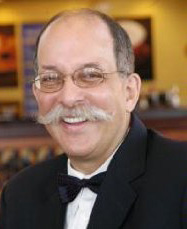 The Wisdom of Butlers Past
The Wisdom of Butlers Past
by Steven Ferry
PART 47: SERVING AT TABLE
It seems that no checklists were in use, so things were often not done on time; nobody was drilled on their station/where to stand, or who would bring the sauce, etc., so again, things were not done or were done clumsily, the whole event being like some slapstick comedy as the wait staff fell over each other to see to requests by guests that should not have had to be made in the first place.
One word of advice was to lay only the silverware for that course, which is not what was done a century later, or indeed today, for formal dinners, where silverware for all courses are laid beforehand to minimize distractions for guests.
More advice: Only have senior staff serving guests, as they would know the individuals and the order of precedence for serving them according to their rank; in this way, the junior staff could follow with vegetables, sauces, and breads, in the right sequence.
One other trick: The butler would place napkins or other table cloths over the tablecloth so that when the last course, dessert, was to be served, these could be removed, leaving a clean tablecloth underneath.
Extracted from the 1823 book, The Footman’s Directory and Butler’s Remembrancer, re-published in hardback by Pryor Publications. You may obtain your discounted copy (with free s&h) by emailing the publisher: Mr. Pryor (alan AT pryor-publications.co.uk).
The Institute is dedicated to raising service standards by broadly disseminating the mindset and superior service expertise of that time-honored, quintessential service provider, the British Butler, updated with modern people skills, and adapted to the needs of modern employers and guests in staffed homes, luxury hotels, resorts, spas, retirement communities, jets, yachts & cruise ships around the world.


 The Wisdom of Butlers Past
The Wisdom of Butlers Past The Wisdom of Butlers Past
The Wisdom of Butlers Past